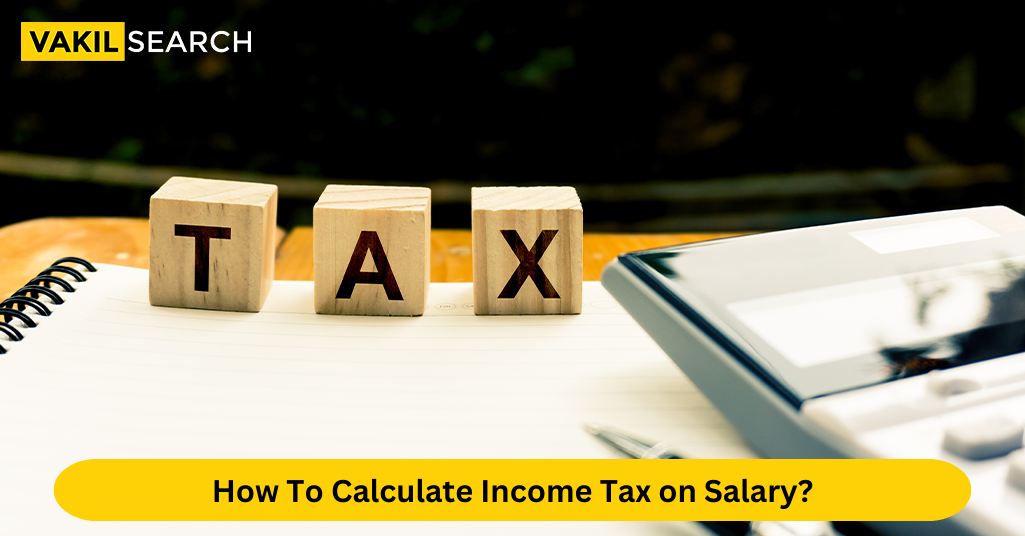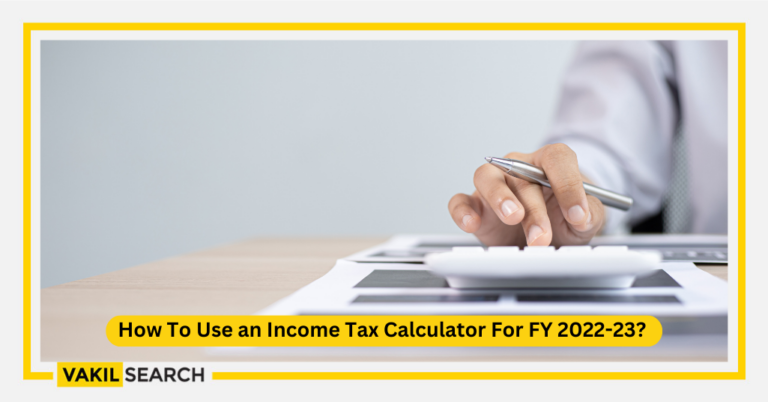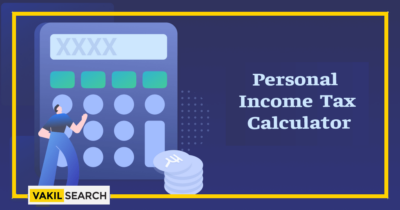If you are looking forward to calculating the income tax on your salary, then you are at the right place. Check out this article to know more.
Many people in India still think that calculate income tax is a complicated and tough process. We can say there are two sides to this point. If you are unaware of all the components and formulas of calculating income tax, it can be a complicated process for you. But if you know all the essential information about income tax and the procedure used to calculate it, then it can be one of the easiest things to do. Also, having complete information about income tax on salary and other segments can help you save a lot of bucks in taxes.
Most of the people who are unaware of the facts related to income tax end up paying more tax than they are supposed to pay. Lack of information is the main reason behind all this. So, today, we will share all the essential details related to income tax and the calculation of income tax. These details will surely make the Calculate Income Tax task an effortless task for you.
What Is Income Tax?
According to the Income Tax Act: https://www.incometax.gov.in/iec/foportal/, of 1961, every person earning a salary in India must pay an amount from their salary to the country as tax. This amount of tax is termed income tax. The law consists of many variations and amendments, and many deductions are available under section 80. We will be sharing every detail related to it in this blog post.
Empower Your Business With Expert Precision – Our Top-Tier Bookkeeping Service for a Seamless Financial Journey!
Components for Calculating Income Tax
While calculating income tax, you should know some basic terminologies.
- The tax year: The tax year is the previous financial year for which the income tax had to be paid. The financial year starts on the 1st of April and ends on 31st March of next year.
- Assessment year: Many people think that the assessment year and financial year are the same, but this is not true. Both of them are entirely different things. The assessment year starts after the financial year gets over. In simple words, we can say that the year in which you have to pay income tax for the last financial year is known as the assessment year.
- Salary breakup: Your salary is divided into basic pay, transport allowance, entertainment allowance, and many others. You can get your salary breakup from your company’s HR.
- Taxable income: Taxable income is the income on which you need to pay taxes like income from salary, income from property, income from the business, and income from ITR for presumptive income
- Deductions: Taxable income = Gross income – Deductions. Deductions are the savings you do not need to pay taxes on. More details about deductions are given below.
Deductions Under Section 80
Under section 80 of the Income Tax Act, 1961, many deductions are mentioned by the act makers that benefit an individual taxpayer by bringing down the taxable income and reducing the taxes that must be paid. You should be aware of these deductions so that you can save a lot of bucks in taxes. Here are the 80D deduction that are mentioned.
| Section | Maximum Limit | Deductions |
| Section 80C | 1,50,000 | ULIP, ELSS, NSC, the Employee share of PF, LIC Premium, Children’s tuition fees, Home loan principal repayment, 5-year deposit Scheme, purchasing of a deferred annuity, Senior citizen’s saving scheme, Pension fund set up by UTI or mutual fund, annuity plan of LIC, Subscription to Home Loan Account Scheme of the National Housing Bank, Subscription to notified bonds of NABARD, Subscription to deposit scheme of a public sector or company engaged in providing housing finance. |
| Section: 80CCC | NA | |
| Section: 80CCC | NA | On the amount deposited in the annuity plan of LIC or any other insurance plan for a pension fund. |
| Section: 80CCD(1) | 1,50,000 | Employee’s contribution to NPS account |
| 80CCD(2) | 10% salary | Employer’s contribution to NPS |
| Section: 80CCD(1B) | 50,000 | Any other contribution to NPS by an employee |
| 80TTA(1) | 10,000 | Income from interest earned on savings account |
| 80TTB | 50,000 | Interest received from banks, post office, etc. but applicable only to senior citizens |
| Section: 80GG | 5000 per month / 25% of total income/rent paid – 10% of total income (W.E.L.) | For rent paid when HRA is not received from an employer |
| Section: 80E | Amount equal to the interest paid for 8 years | Interest paid on education loan |
| Section: 80EE | 50,000 | Interest paid on home loans by the first time homeowners |
| Section 80CCC | 25,000/ 50% of amount invested in equity shares (w.e.l.) | Rajiv Gandhi Equity Scheme for investments in Equities |
| Section: 80D | 25,000 | Medical insurance of self, spouse and children |
| Section: 80D | 50,000 | Medical insurance of parents over 60 years or uninsured parents over 80 years of age. |
| 80DD | 75,000 | Medical treatment of handicapped dependent |
| Section: 80DD | 75,000 (40%-80% disability), ` 1,25,000 (more than 80%) | Payment made to specific scheme taken for maintenance of handicapped dependent |
| Section: 80DDB | 40,000 or amount paid (w.e.l.) | Medical expense on self or dependent less than 60 years old |
| Section: 80DDB | 1,05,000 or amount paid (w.e.l.) | Medical expense on self or dependent more than 60 years old |
| Section: 80U | 1,25,000 (severe disability), ` 75,000. | Self-suffering from physical disability including blindness and mental instability |
| Section: 80GGB | Contributed amount (Not in cash) | Contribution made to political parties by companies |
| Section: 80GGC | Contributed amount (Not in cash) | Contribution made to political parties by individuals |
| Section: 80RRB | Income received / 3,00,000 (w.e.l.) | Income received from royalty or patent |
Use Vakilsearch’s take home salary calculator to calculate your in-hand salary. The salary breakup calculator will help determine your exact take home salary.
How to Calculate Income Tax on Salary?
We would like to tell you that it is very easy to calculate income tax. The formula for calculating income tax on salary is as follows:
- Example
If Mrs. Sharma has a salary of Rs 30,000 per month with a dearness allowance of Rs 3500 per month, transport allowance of Rs 3000 per month, and pays Rs 4500 towards professional tax, then her taxable income would be:
| Basic Salary | 30000 * 12 | = 3,60,000 |
| DA | 3500 * 12 | = 42,000 |
| EA | 3000 * 12 | = 36,000 |
| Gross Salary | = 4,38,000 | |
| Professional Tax | 4500 | |
| Net income | = 4,33,500 |
Conclusion
As of now, we have shared all the significant details about the process of calculating income tax. We will be back soon with more such updates. Till then, stay tuned to Vakilsearch.
FAQs
1. What is the income tax rate for a monthly salary of 50,000 in India?
The income tax rate for a monthly salary of 50,000 in India depends on the tax slab under which the individual falls. For the financial year 2023-24, the tax rate for income between Rs. 5,00,001 to Rs. 7,50,000 is 10%, and for income between Rs. 7,50,001 to Rs. 10,00,000, it is 15%.
2. How much income tax will I pay if my annual salary is 12 lakhs?
If your annual salary is 12 lakhs, your taxable income will depend on various factors such as deductions under various sections like 80C and 80D. Using the income tax calculator provided by Vakilsearch, for the financial year 2023-24, the total tax on a gross taxable income of 12 lakhs is Rs. 1,73,000 under the old tax regime and Rs. 2,20,104 under the new tax regime.
3. Can you provide an example of how to calculate income tax on salary for the financial year 2023-24 in India?
Using the example provided by Vakilseqrch experts, let's say Reha receives a Basic Salary of Rs 1,00,000 per month, HRA of Rs 50,000, Special Allowance of Rs 21,000 per month, and LTA of Rs 20,000 annually. Reha pays a rent of Rs 40,000 and lives in Delhi. If Neha deposits Rs 50,000 in PPF, invests Rs 20,000 in ELSS and pays Rs 8,000 as LIC premium, and EPF deducted by the employer (Reha’s contribution) is Rs 1,00,000 *12% *12 = 1,44,000, then her gross taxable income under the old tax regime is Rs. 15,00,000 and under the new tax regime is Rs. 18,22,000. Then the total tax on her gross taxable income under the old tax regime is Rs. 2,73,000 and under the new tax regime is Rs. 3,25,104.
4. What is the basic exemption limit for individuals under the income tax laws in India?
The basic exemption limit for individuals under the income tax laws in India depends on their age and income. For individuals below 60 years of age, the basic exemption limit for the financial year 2023-24 is Rs. 3,00,000. For senior citizens (between 60 and 80 years of age), the basic exemption limit is Rs. 5,00,000, and for super senior citizens (above 80 years of age), it is Rs. 10,00,000.
5. How can I calculate my taxable income after deductions under various sections like 80C and 80D in India?
To calculate your taxable income after deductions under various sections like 80C and 80D in India, you can use the income tax calculator provided Vakilsearch. You can enter your income details, deductions under various sections and other relevant information to calculate your taxable income and tax liability.
6. What is the difference between gross income and taxable income in the context of income tax calculation?
Gross income is the total income earned by an individual before any deductions or exemptions. Taxable income, on the other hand, is the income on which tax is calculated after taking into account various deductions and exemptions allowed under the income tax laws. In other words, taxable income is the income on which an individual is liable to pay tax.
7. What is TDS (Tax Deducted at Source) and how is it calculated on salary income in India?
TDS or Tax Deducted at Source is a system of collecting tax at the source of income. In the case of salary income, the employer deducts TDS from the employee's salary and deposits it with the government on behalf of the employee. The employer calculates the TDS based on the employee's salary, deductions and exemptions, and then deducts the TDS accordingly. The TDS deducted by the employer is reflected in the employee's Form 16, which is issued at the end of the financial year.
Read More:










